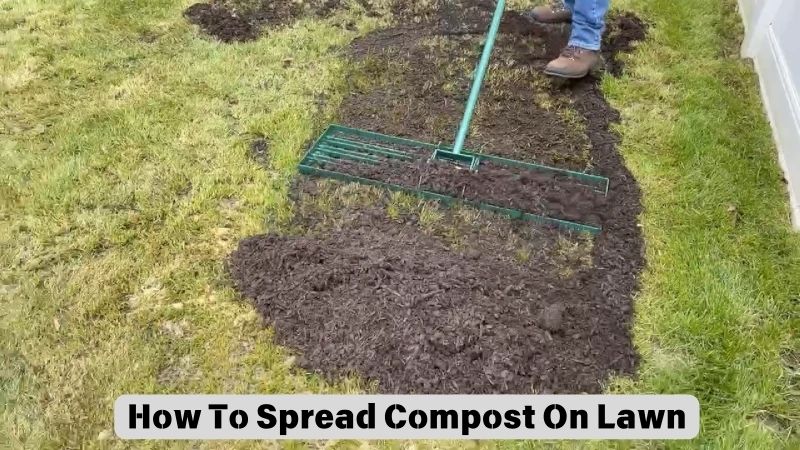When you want to improve the health and beauty of your yard’s lawn, applying compost is an important step in providing essential nutrients to the soil and plants. How to spread compost on lawn not only improves soil structure but also enhances moisture retention, making your lawn greener and healthier. Join Garden Creatives for specific steps to how to spread compost on lawn, from determining how much fertilizer to use to watering after the job is complete.
How to spread compost on lawn
To create a beautiful lawn, it starts with healthy soil. Organic fertilization is the most effective method for improving soil quality, as it provides the nutrients and organic matter necessary for grass growth. Sprinkling organic fertilizer on your lawn is a great way to provide nutrients and promote grass health.
You should apply organic fertilizer in spring and fall for best results. This is especially useful when combined with other techniques such as aeration or additional lawn seeding. In the Greater-Manassas, VA area, where grass can stop growing due to summer heat and frozen soil in winter, applying organic fertilizer in the spring or fall is an ideal time to maintain growth. Continuous growth of grass.
Step 1: Determine the Amount of Compost Needed
When applying compost to your lawn, you should use a layer of compost that is ¼ inch to ½ inch thick. This layer of manure is enough to improve the soil without hindering grass growth, ensuring that the blades of grass still emerge through the layer of compost to be exposed to sunlight.
If you have just aerated your lawn or mowed it quite high, use a layer of compost close to ½ inch. In case you are also planting new seeds, keep a layer of compost of about ¼ inch so as not to suffocate the new grass seeds.
Calculate how much compost is needed for your lawn: For every 25 square feet of lawn, you need about half a cubic foot of compost to create a layer ¼ inch thick, or one cubic foot to create a layer ½ inch thick.
For smaller lawns, you can buy pre-bagged compost. Typically, one cubic foot is a common size for compost bags for ease of portability, but larger compost bags, up to 1.5 cubic yards, are also available in some areas. If you need more than 10 bags of compost, buying in bulk may be more cost-effective than buying many small bags.
Step 2: Choose a Quality Compost
When choosing compost for your lawn, keep the following factors in mind to ensure the best quality. Avoid composts that contain trash, rocks, or unwanted debris. It’s best to choose organic fertilizer made from ingredients you feel comfortable with and trust.
To prevent the introduction of weeds into the lawn, choose compost that is processed at high temperatures (above 140 degrees Fahrenheit). Compost processed at high temperatures helps kill weed seeds and pathogens, ensuring that you don’t harm your lawn.
You may consider saving homemade compost for other areas of your garden and purchasing compost from industrial or municipal composting facilities. This helps ensure that the compost you use for your lawn is clean and effective.
Step 3: Cut the Grass
Before applying organic fertilizer, cut the grass down to about 1.5-2 inches. For grasses common to your area, like Fescue and Bluegrass, mowing at this height makes it easier to spread compost and take other steps like aeration and seeding.
Step 4: Distribute Compost Around the Yard
Spread small piles of compost around your yard. Place compost bags a few feet apart or pour loose compost into a wheelbarrow. Compost should be evenly distributed with only a few shovels per pile. Creating several small piles will make it easier for you to rake the compost in the next step. For large lawns, it may be helpful to test a few piles first, then rake them clean to check spacing and ensure the compost is evenly distributed.
If you are aerating or seeding your lawn, perform these steps before fertilizing.
Step 5: Rake and Mix Evenly
Use a rake to distribute the compost evenly across the entire lawn. This helps the compost make good contact with the soil and grass blades, and reduces the chance of the compost falling into dense clumps of grass.
Step 6: Water the Lawn
After spreading compost, watering the lawn helps the compost material penetrate the soil and wash the compost off the grass blades, exposing them to sunlight. You can mulch the compost before a light rain to save effort, but avoid allowing your lawn to become waterlogged from too much water, from either rain or irrigation, in the first few days.
Conclude
How to spread compost on lawnt not only brings long-term benefits to the lawn but also saves time and effort during garden care. By how to spread compost on lawn from choosing quality compost to watering properly, you will create an ideal environment for grass growth. Don’t forget to monitor your lawn’s growth and adjust your care steps as needed, to ensure your lawn always maintains optimal beauty and health.





